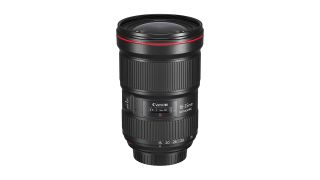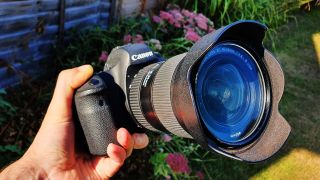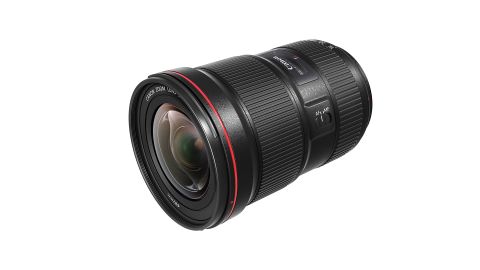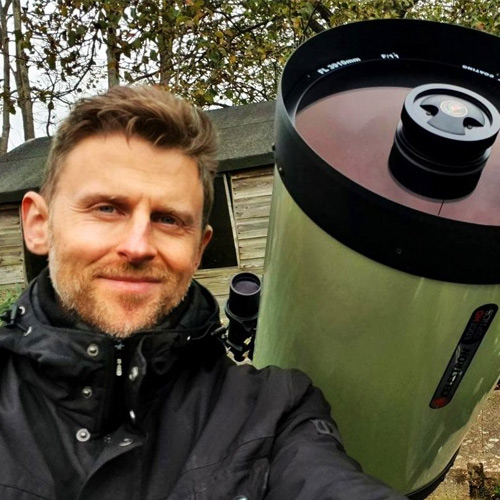Space Verdict
The Canon EF 16-35mm f/2.8L III USM lens is a superb lens for shooting wide-field photos of the night sky. Though expensive, it delivers superb results worthy of its price tag.
Pros
- +
Pin sharp image quality across the entire field
- +
Superb color correction
- +
Rapid and accurate autofocus
Cons
- -
Very expensive
- -
Heavy
Why you can trust Space.com
When it comes to wide-angle zoom lenses, there are few available that match up to the renowned Canon EF 16-35mm f/2.8L III USM lens. Building upon the superb quality of its predecessor, the Mk III version offers an improved AF system and top-quality optics to exploit the high resolution sensors found on the best cameras for astrophotography.
Type: Wide-angle zoom
Compatibility: Canon EF mount
Focal range: 16 – 35mm
Aperture range: F/2.8 fixed
Filter thread size: 82mm
Weight: 790g
Its focal length range of 16-35mm coupled with a fast f/2.8 design makes it ideally suited to shooting wide-angle views of the night sky – so-called ‘nightscape’ photography. In this review, we look in more detail as to how this lens performs for astrophotography to see if it really is worth its high price tag, and why it sits among our best lenses for astrophotography.
Canon EF 16-35mm f/2.8L III USM lens review: Design
The Canon EF 16-35mm f/2.8L III USM lens is among Canon’s premier wide angle zoom L series lenses. It offers a 16-element lens design to fully correct for common optical defects such as chromatic aberration and field distortion. Along with this, it offers a very fast fixed f/2.8 aperture making it ideally suited to low light photography. The lens is also equipped with a high-quality USM focusing system which is impressively accurate and rapid.
One of the key points of this lens is its very fast f/2.8 aperture meaning it can gather lots of light – ideal for astrophotography. Slower lenses require longer exposure times so a fast high-quality lens such as this is the optimal choice for those wanting to shoot the night sky.

Some of the key design features of the Canon EF 16-35mm f/2.8L III USM lens include:
- 16-element lens design using ultra low dispersion glass
- High speed USM CPU controlled focusing system
- Advanced Air Sphere optical coatings to minimize ghosting and flare
Included in the box along with the lens itself are a lens hood, case, front and rear caps, and a user manual. The lens itself is heavy at a hefty 790g, which isn’t a great surprise given its complex multi-element lens system. It feels solid and comfortable in the hand with well-placed controls. For most astrophotography purposes you’ll have your camera mounted to a tripod, and for hefty lenses such as this, it will need to be a sturdy one!
Canon EF 16-35mm f/2.8L III USM lens review: Performance
Having used this lens several times now out under the stars we have to say it really does perform extremely well. We tested the lens on a full frame body to test its performance to the limit.
False color is extremely well controlled. There is some very slight field distortion at the very corners of the frame but it's very minor and only noticeable when scrutinizing the full resolution image. The performance isn't perfect, but given the f/2.8 design, it's very impressive and far superior to cheaper lenses.

We primarily tested the lens by shooting the late summer sky, so the Milky Way was still well in view. Even using relatively short exposures (15 seconds), you can get an impressively sharp and detailed view of the sky using this lens with pin-sharp star images across the frame. It certainly delivers better image quality than typical 18-55mm kit lenses that are so popular among many entry-level cameras.

Another point worthy of mention here is the AF system. This works extremely well, and on objects such as the brighter stars and planets, it works just as well as focusing manually using the camera's Live View feature. That said, however, when it comes to shooting images of the night sky, focusing manually is always advised, and in that regard, it worked well with a precise focus ring motion, allowing you to really nail the focus properly.

Should you buy the Canon EF 16-35mm f/2.8L III USM lens?
For the more experienced photographers for whom this lens is aimed, it's certainly worthy of serious consideration if wide-field photography (either astronomical or terrestrial!) is one of your prime areas of interest. That said, the high price tag will raise a few eyebrows for many. Spending over $2000 on a lens is a serious investment, especially when the Mk II version can be found on the used market for a much lower price and offers a similar performance.

If this product isn't for you
Not everyone can afford to spend such a large sum of money on a single lens. The good news is that there are plenty of more affordable alternative options available. If buying a premium lens falls outside of your budget, the Canon EF-S 10-18mm f4.5-5.6 IS STM lens or the Canon EF-S 10-22mm f/3.5-4.5 USM lens are some more affordable options.
Join our Space Forums to keep talking space on the latest missions, night sky and more! And if you have a news tip, correction or comment, let us know at: community@space.com.
Damian A. Peach FRAS is a British amateur astronomer, astrophotographer, lecturer and author. Best known for his photographs of a wide variety of astronomical objects. His career in the field spans over thirty years.
Peach's passion for Astronomy first began in 1988 inspired by books in his school library. Later he joined the British Astronomical Association (BAA) in 1996 and since then has contributed large amounts of observations to the various observing sections and also written and co-authored many papers in the organization's journal. He was awarded the organization's prestigious Merlin Medal in 2006. The same year he was also awarded the Association of Lunar and Planetary Observers (ALPO) Walter H. Haas award for his contributions.
Peach has provided astronomical images for magazines and books throughout his career. His images have been featured in Astronomy Magazine, Sky & Telescope, Astronomy Now & The Sky at Night. He has also authored articles on astrophotography for these magazines. Peach has also been a co-author on several professional scientific papers on planetary astronomy, especially regarding work on Mars and Jupiter. He was one of only a few amateur astronomers to have work featured as part of the national Explorers of the Universe exhibition at the Royal Albert Hall in 2007. His work has also appeared at the Edinburgh Science Festival, and The Royal Greenwich Observatory.
Peach's work has also been used by NASA and ESA to illustrate what ground-based telescopes can achieve in photographing the planets, and the support they can provide to professional space probe missions.


